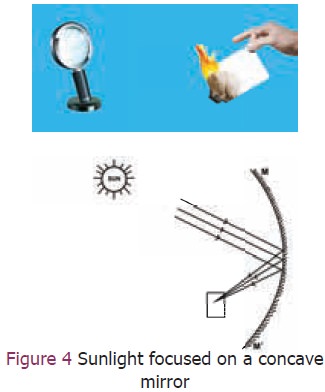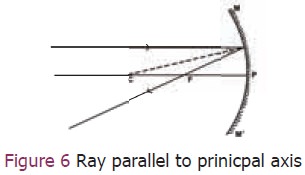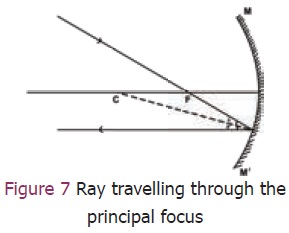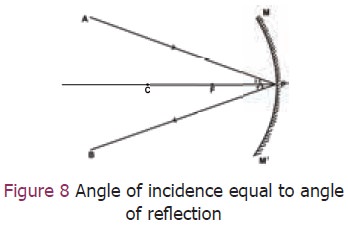Light | Science - Image Formed by Curved Mirrors | 9th Science : Light
Chapter: 9th Science : Light
Image Formed by Curved Mirrors
Image Formed by Curved Mirrors

We have seen that the parallel rays of sun light
(Figure 4) could be focused at a point using a concave mirror. Now let us place
a lighted candle and a white screen in front of the concave mirror. Adjust the
position of the screen. Move the screen front and back. Note the size of the image
and its shape. Is it inverted? Is it small?
Next, slowly bring the candle closer to the mirror.
What do you observe? As you bring the object closer to the mirror the image
becomes bigger. Try to locate the image when you bring the candle very close to
the mirror. Are you able to see an image on the screen? Now look inside the
mirror. What do you see? An erect magni ed image of the candle is seen. In some
positions of the object an image is obtained on the screen. However at some
position of the object no image is obtained. It is clear that the behaviour of
the concave mirror is much more complicated than the plane mirror.
However, with the use of geometrical technique we
can simplify and understand the behaviour of the image formed by a concave
mirror. In the earlier case of plane mirror, we used only two rays to
understand how to get full image of a person. But for understanding the nature
of image formed by a concave mirror we need to look at four speci c rules.
1. Rules for the construction of image formed by spherical mirrors
From each point of an object, number of rays travel
in all directions. To nd the position and nature of the image formed by a
concave mirror, we need to know the following rules.
Rule 1: A ray passing through the centre of curvature
is reflected back along its own path (Figure 5).

Rule 2: A ray parallel to the principal axis passes
through the principal focus after reflection (Figure 6).

Rule 3: A ray passing through the focus gets reflected
and travels parallel to the principal axis (Figure 7).

Rule 4: A ray incident at the pole of the mirror
gets reflected along a path such that the angle of incidence (APC) is equal to
the angle of reflection (BPC) (Figure 8).

Related Topics